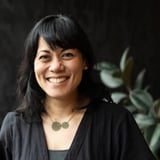Summary
Many organizations struggle with justifying and prioritizing accessibility. One of the primary reasons is because they’re thinking about accessibility all wrong. Instead of a checklist, a list of legal requirements, or a set of shackles holding designers and developers back, it’s time to start thinking of accessibility as what it is: an opportunity to innovate! In this presentation, Fable will draw from our expertise helping organizations like yours start the accessibility journey, to change the way you think about disability, assistive technology, and accessibility. We will demonstrate that accessible products are more flexible, customizable, and useful for all users. We’ll also show you how accessibility is directly tied to the creation of many of the most exciting and innovative technologies of the last 50 years, and how it’s changed the entire world for everyone. This presentation will inspire you with the information and ideas you need to accelerate your accessibility journey.
Key Insights
-
•
Accessibility features like dark mode and voice assistants originated for disabled users but now benefit everyone.
-
•
One in five people live with a disability, including permanent, temporary, and situational disabilities.
-
•
Situational disabilities, such as carrying groceries or being in a noisy environment, require accessibility features that help all users.
-
•
Accessible products designed for edge cases provide better, more customizable experiences for the majority (designing for the edges gets the middle for free).
-
•
Accessibility innovation has driven mainstream tech advances like text-to-speech, GPS navigation, and voice recognition devices.
-
•
Flexible, customizable design — not simplified or lowest-common-denominator approaches — enable accessibility without sacrificing creativity.
-
•
Diverse teams, including people with disabilities, produce more innovative and inclusive products by bringing wider perspectives.
-
•
Accessibility should be integrated early and continuously in design and development cycles, not treated as a one-off compliance checkbox.
-
•
Cultural and linguistic diversity should complement accessibility efforts by including diverse user voices and development teams.
-
•
Designing accessibly is future-proofing digital products for aging users and changing abilities over a lifetime.
Notable Quotes
"Nothing about us without us — centering voices of people with disabilities is critical to inclusive design."
"When you design for the edges you get the middle for free."
"Accessibility requires flexible designs, not limited designs."
"Accessibility is a process, not a project, and needs to be integrated into every sprint cycle."
"Disability is a normal part of The Human Experience, not something shameful or rare."
"Features like autocomplete started as accessibility features but now improve experiences for everyone."
"Accessible design enables us to build products that will still work for our future selves."
"Compliance is a guideline, not a checklist to robotically go through — focus on building good experiences."
"Diverse teams build diverse products, helping to identify needs we might not have thought of otherwise."
"Many innovations in tech, like voice recognition and GPS navigation, started as accessibility solutions."
Or choose a question:
















More Videos

"I wish I could tell my 22-year-old self what to stop doing and what to embrace to be a better designer."
Adam Cutler Karen Pascoe Ian Swinson Susan WorthmanDiscussion
June 8, 2016

"UXers are less satisfied than their peers because we have failed to set expectations about the real work of UX in organizations."
Peter MerholzThe Trials and Tribulations of Directors of UX (Videoconference)
July 13, 2023

"Governance isn’t about choking creativity, it’s about putting bounds and clarity that enable purposeful collaboration."
Lisa WelchmanCleaning Up Our Mess: Digital Governance for Designers
June 14, 2018

"Policy change is the backbone of effective climate strategies in urban areas."
Vincent BrathwaiteOpener: Past, Present, and Future—Closing the Racial Divide in Design Teams
October 22, 2020

"Growth and learning is your long term change management plan."
Brenna FallonLearning Over Outcomes
October 24, 2019

"Working from home during the pandemic is hard because it’s fun only when you can actually leave your home."
Tricia WangSpatial Collapse: Designing for Emergent Culture
January 8, 2024

"Clusters describing demographics and behaviors alone were not enough; we needed emotional personas to find value propositions."
Edgar Anzaldua MorenoUsing Research to Determine Unique Value Proposition
March 11, 2021
"Service lines bridge the gaps between product lines through information flows to provide the right knowledge at the right time."
Designing Systems at Scale
November 7, 2018

"Most product teams work linearly, but systems thinking captures the real-world complexity of moving forward and sometimes stepping back."
Erin WeigelGet Your Whole Team Testing to Design for Impact
July 24, 2024
















